The Church of Santa Giustina in the Sestiere Castello was once much more ornate than it is today, and the palace of a branch of the Gradenigo family has also known better times.
The square was home to a local traghetto, which was a taxi service in gondolas.
The artist Giovanni Grevembroch lived in the Gradenigo palace in the 1740s and 1750s.
Source: Il Gran teatro di Venezia, a collection of sixty vedute of Venice, often with an entertaining or polemic side, published by Domenico Lovisa, c. 1715, in Venice.
Veduta della Chiesa di S. Giustina
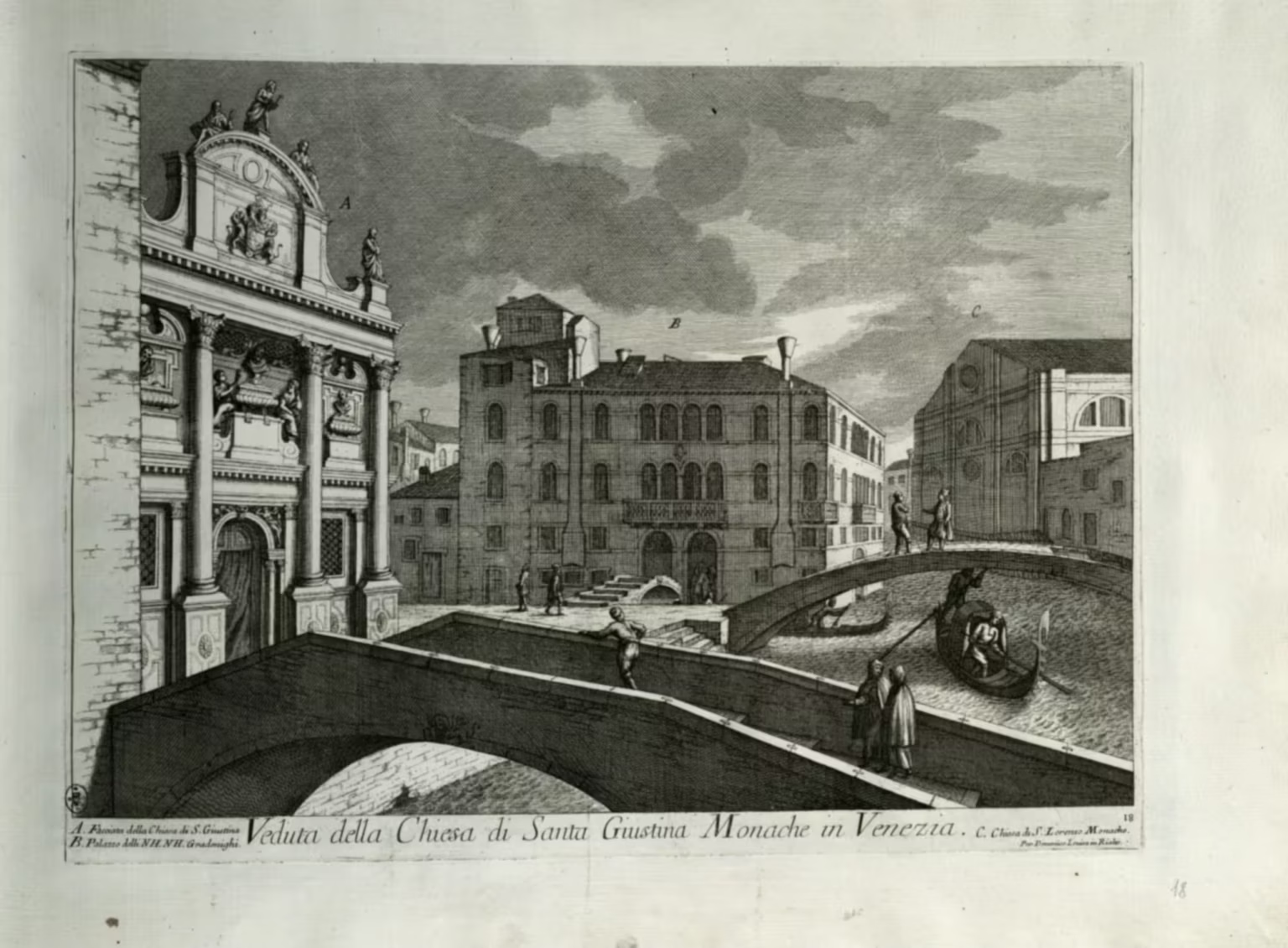
Legend
- Facciata della Chiesa di S. Giustina — Façade of the Church of Santa Giustina
- Palazzo delli NH.NH. Gradenighi — The Gradenigo palace
- Chiesa di San Lorenzo Monache — The Church of San Lorenzo
Location
The Campo di Santa Giustina with the surrounding canals, bridges and palaces.
To the left, the Church of Santa Giustina. According to legend, the church was founded already in the 600s by Saint Magnus of Oderzo. It was rebuilt, and reconsecrated, in 1219, and again in 1500–1501.
The Baroque façade was from 1640, paid by the Soranzo family and designed by Baldassare Longhéna.
Santa Giustina is a local saint from Padua, where her main sanctuary is. Her feast day is October 7th, and when the navy of the Holy League was victorious at Lepanto on that day in 1571, the victory was ascribed to Santa Giustina.
Consequently, each year on October 7th, the Doge and the Signoria arrived by boat for mass in the church.
The campo was only partially paved in 1749, to facilitate the annual ducal visit.
The Palazzo Gradenigo in the middle was the residence of a branch of the Gradenigo family, aptly called the Gradenigo di Santa Giustina. The Gradenigo was one of the most ancient Venetian noble families, among the case nuove, attested in Venice before the year 800.
Events or actions
The two gondolas are probably a reference to the Traghetto di Santa Giustina, a taxi-like service in gondolas, which operated from the Campo Santa Giustina.
Other versions
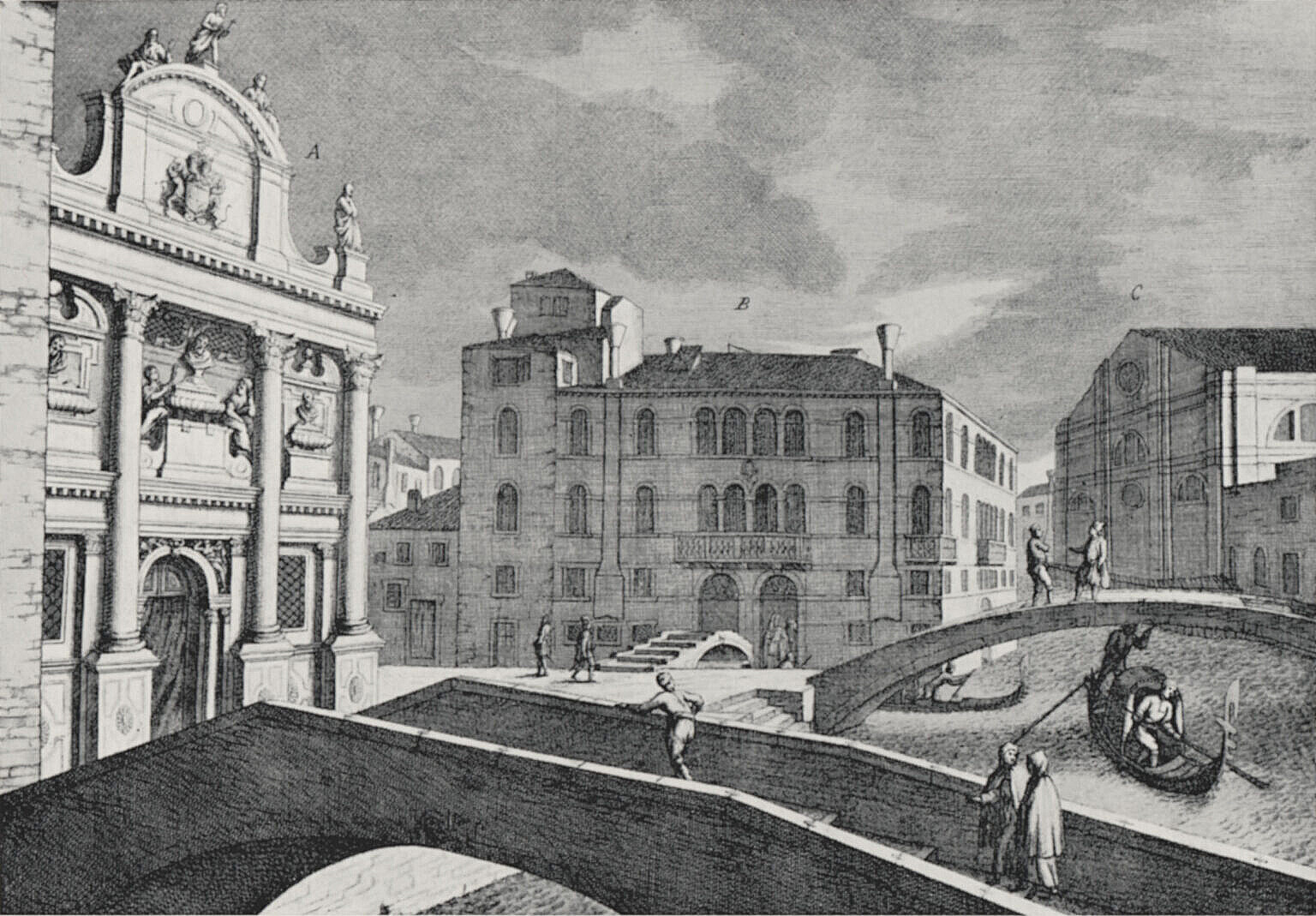
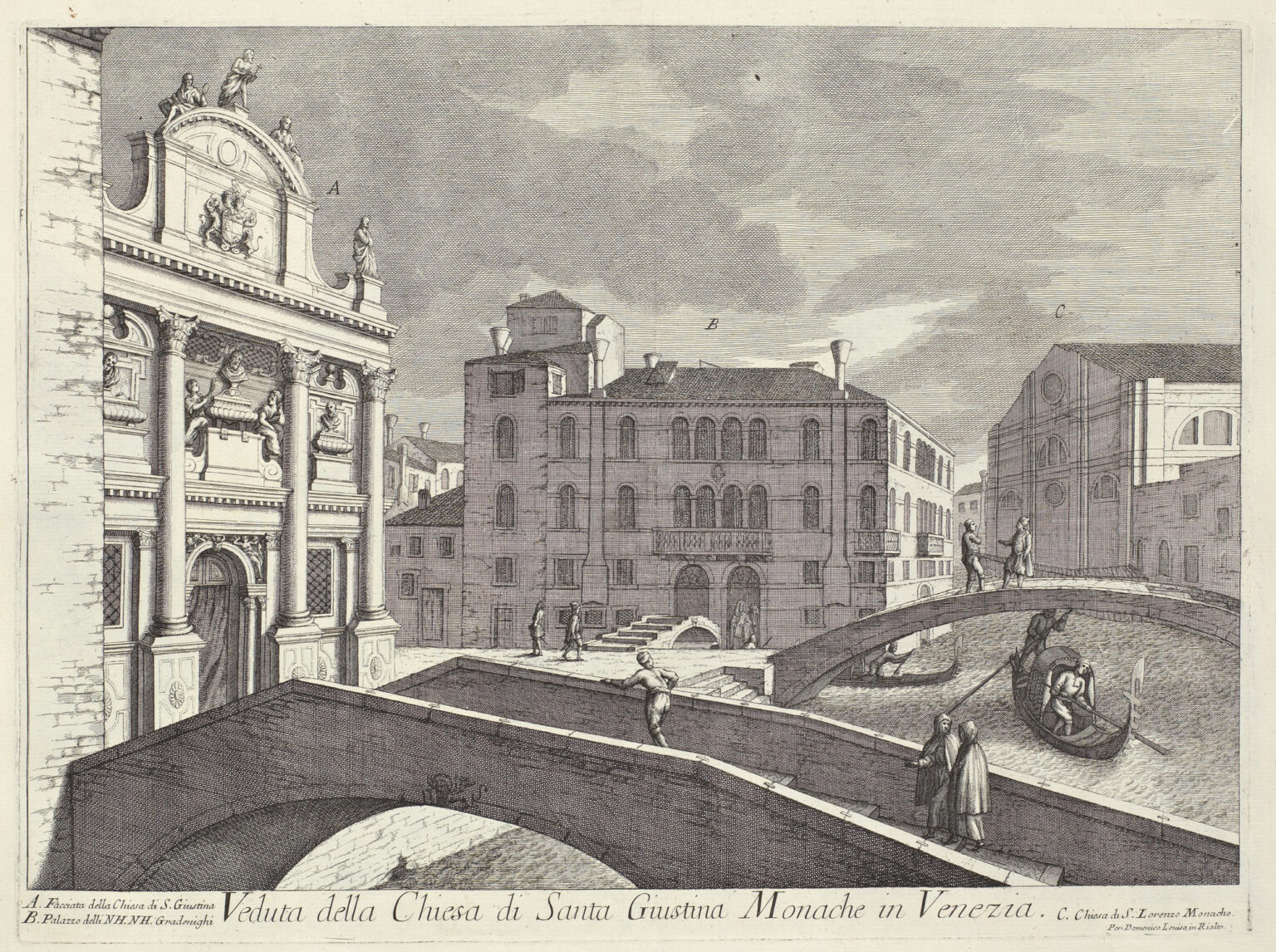
Related articles
Sources
Bibliography
- Grevembroch, Giovanni. Gli abiti de veneziani di quasi ogni eta con diligenza raccolti e dipinti nel secolo XVIII, orig. c. 1754. Venezia, Filippi Editore, 1981. [more]
- Lovisa, Domenico. Il Gran teatro di Venezia ovvero descrizzione esatta di cento delle più insigni prospettive, e di altretante celebri pitture della medesima città, il tutto disegnato, e intagliato eccelentemente da periti artefici, con la narrazione della fondazione delle chiese, monasteri, spedali, isolette, e altri luoghi sì pubblici, come privati. Venezia per Domenico Lovisa sotto i portici a Rialto, 1715. [more] 🔗
- Tassini, Giuseppe. Curiosità Veneziane ovvero Origini delle denominazioni stradali di Venezia. 1863. [more] 🔗
Localities
Today
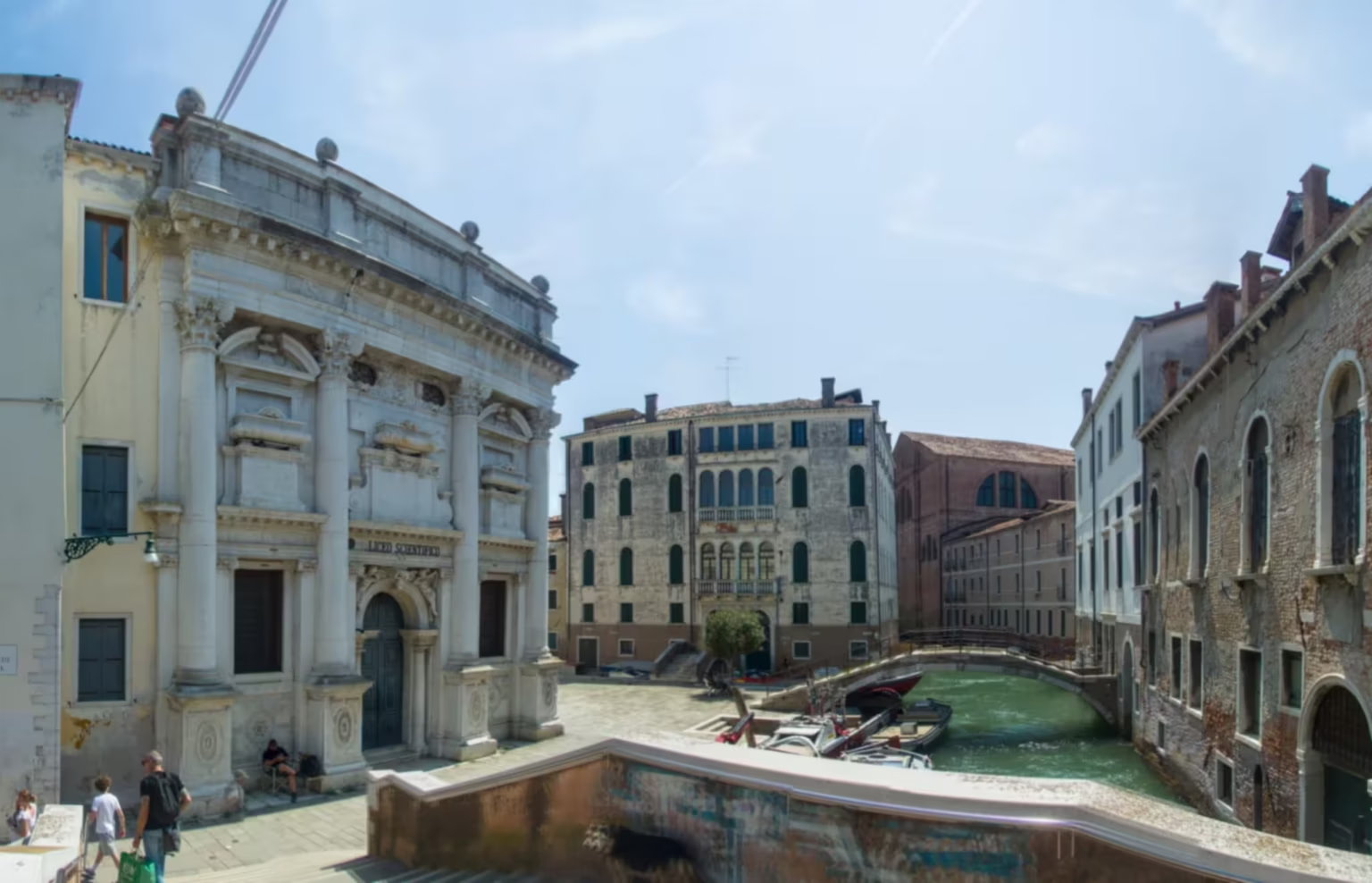
The Chiesa di Santa Giustina was deconsecrated in 1810, and the bell tower demolished in 1841. The inside was divided into two floors in 1844, for use by an Austrian military school. It is now used by a high-school for their library.
All the statues have been looted during the time of Napoleon, and the tympanum demolished.
The Palazzo Gradenigo passed into municipal ownership when the Gradenigo like ended in the 1800s, and it was until recently used by a company providing IT services to the Municipality of Venice. Currently, it stands empty.
The Chiesa di San Lorenzo was also deconsecrated in 1810.
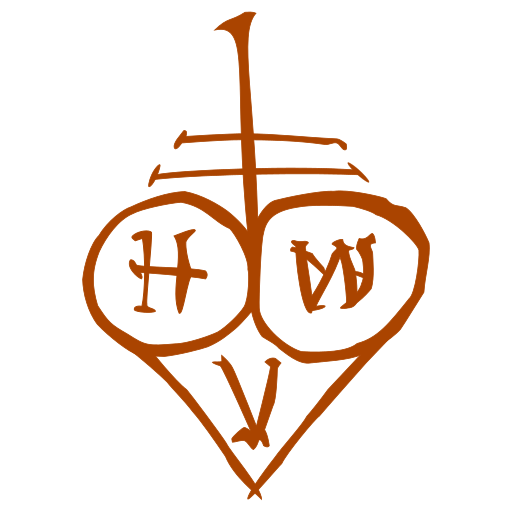
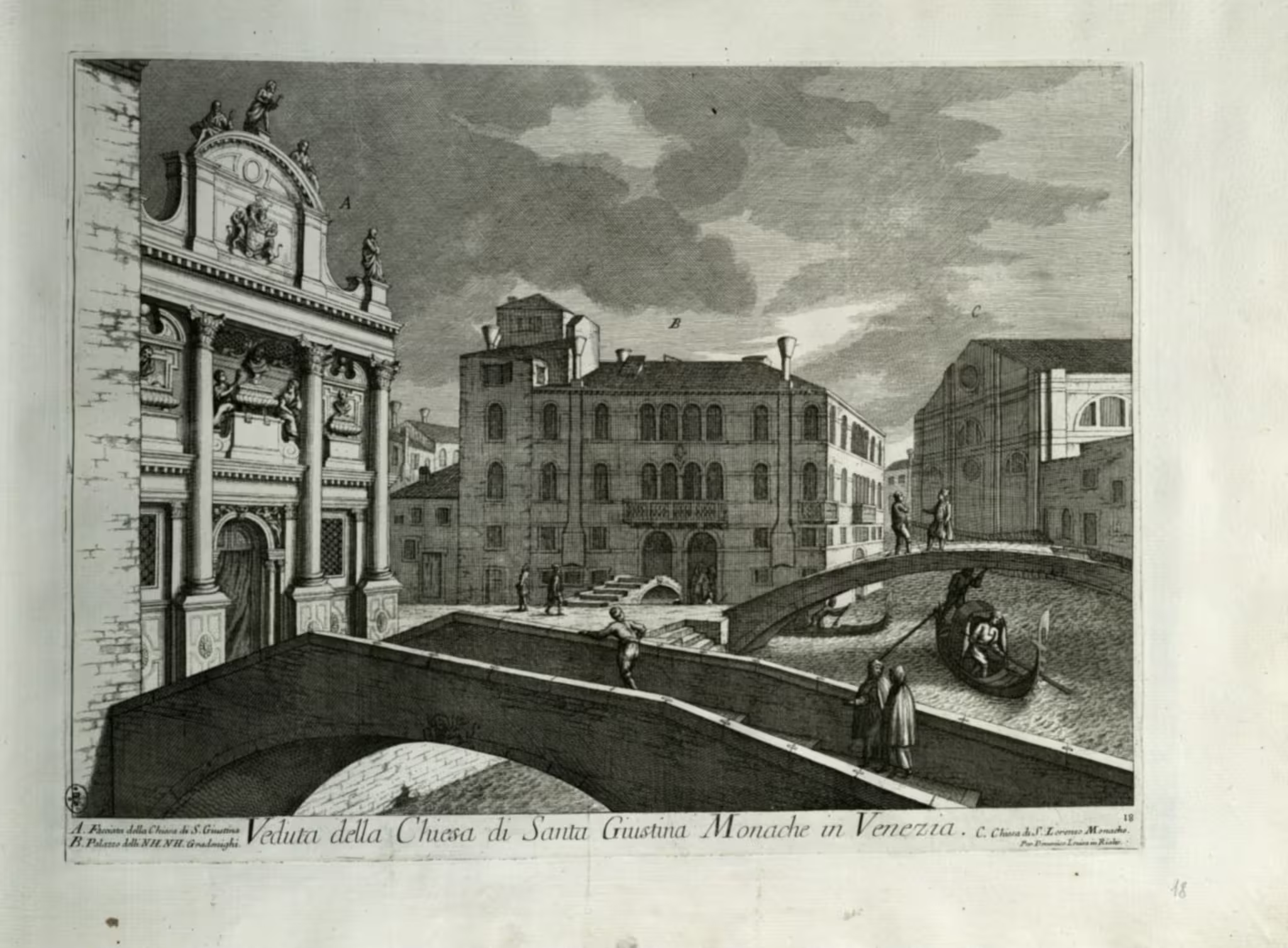
Leave a Reply